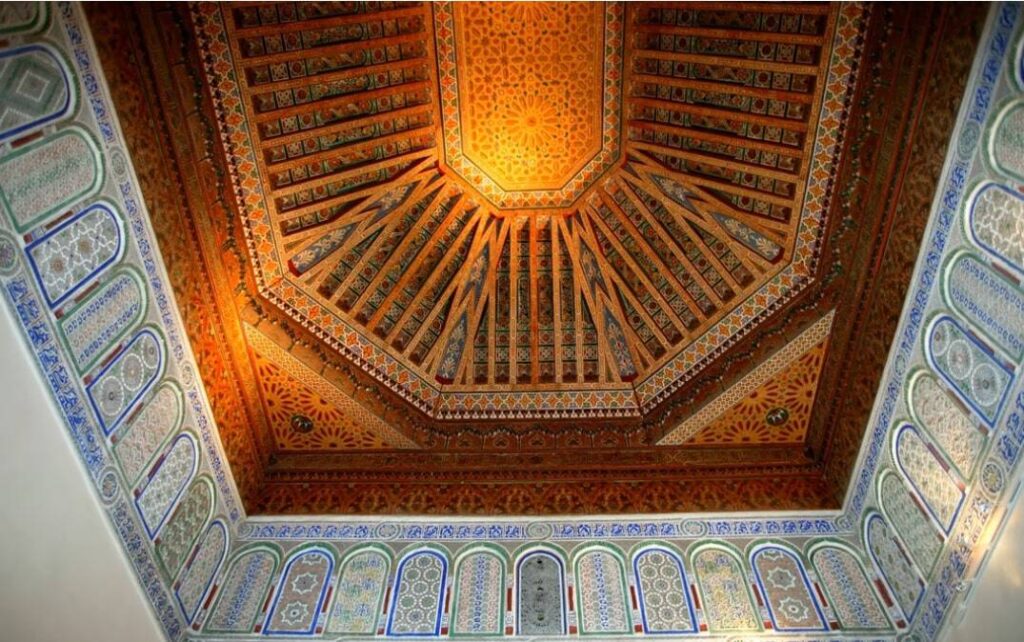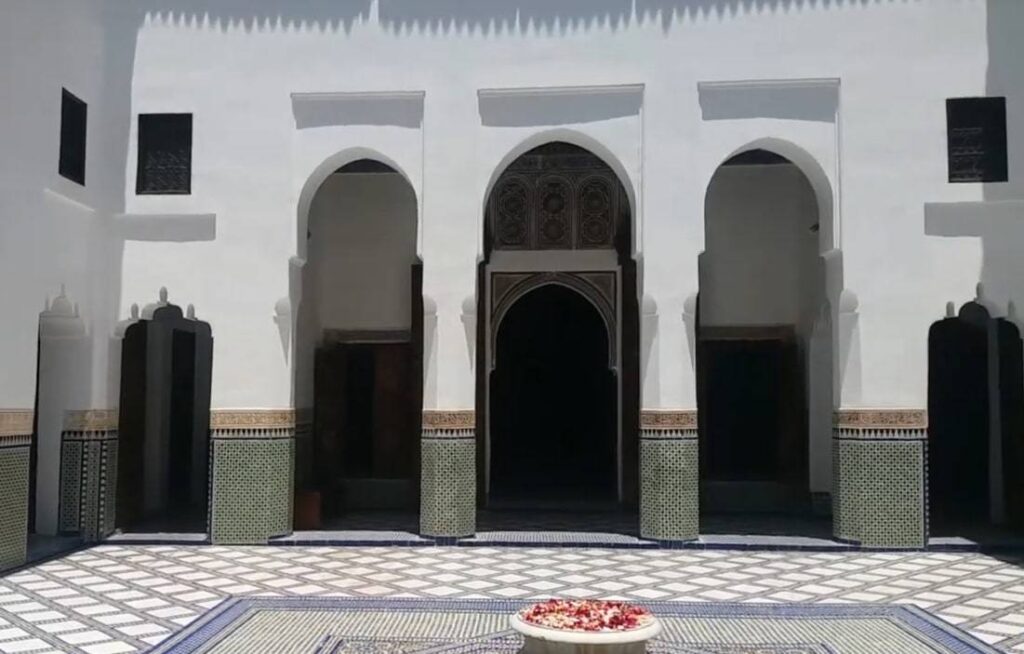Nestled in the heart of Marrakech, Dar Si Said Museum is a treasure trove of Moroccan art and culture. As one of the most renowned Marrakech museums, it showcases an exquisite collection of artifacts, from intricate carpets to stunning ceramics.
Visitors can explore the rich history and craftsmanship of Morocco by purchasing Dar Si Said Museum tickets, offering a unique glimpse into the nation’s artistic heritage.
What is The History of Dar Si Said?

Also known as the Museum of Moroccan Arts, Dar Si Said is one of the most celebrated cultural landmarks.
Built in the late 19th century by Si Said Ben Moussa, the brother of the then Grand Vizier Ba Ahmed Ben Moussa, the palace exemplifies the opulent architecture and intricate craftsmanship of its era.
Si Said, who served as the Minister of War, commissioned the construction of this lavish residence to reflect his status and wealth.
The palace is a stunning example of traditional Moroccan architecture, featuring intricately carved wooden ceilings, zellige tilework, and beautiful stucco decorations. Its rooms are arranged around a central courtyard adorned with a fountain, a hallmark of Moroccan design meant to provide tranquility and respite from the heat.
After Si Said’s death, the palace went through various phases of use, including serving as a residence for notable figures and a venue for official functions. In 1932, it was converted into a museum to preserve and showcase the rich artistic heritage of Morocco.
Today, the museum houses an extensive collection of Moroccan artifacts, including carpets, jewelry, pottery, and textiles, offering visitors a glimpse into the country’s artistic traditions and cultural history.
The museum’s exhibits highlight the craftsmanship and cultural significance of Moroccan arts, making Dar Si Said a vital institution for both locals and tourists seeking to understand the rich tapestry of Moroccan heritage.
As a testament to its historical and cultural value, Dar Si Said continues to be a cherished landmark in the heart of Marrakech, inviting visitors to step back in time and explore the opulence and artistry of Morocco’s past.
The Architecture of Dar Si Said

The architecture of Dar Si Said is a true testament to the grandeur and detailed craftsmanship with a traditional Moroccan design.
Constructed in the late 19th century, this grand palace was built by Si Said Ben Moussa, brother of Grand Vizier Ba Ahmed Ben Moussa, in Marrakech. It exemplifies the elegance and sophistication of Moroccan palatial architecture, seamlessly blending Islamic and Moorish influences.
The palace is organized around a series of courtyards, the most prominent being a central courtyard adorned with a marble fountain, lush greenery, and intricate tilework.
This courtyard serves as the heart of the palace, providing a serene and cooling environment typical of Moroccan homes. The surrounding rooms open onto this courtyard, creating a harmonious flow between indoor and outdoor spaces.
One of the standout features of Dar Si Said is its exquisite woodwork. The ceilings are adorned with intricately carved cedar wood, showcasing geometric patterns and arabesques.
This level of detail extends to the doors and windows, which are also beautifully carved and decorated. The walls are embellished with zellige tiles, forming intricate mosaics that add vibrant color and texture to the space.
Stucco work is another prominent feature, with walls and arches displaying delicate plaster carvings that highlight Islamic artistic traditions.
These elements, combined with the use of traditional materials such as tadelakt (polished plaster) and chiseled marble, create a rich and luxurious atmosphere.
The architectural layout of Dar Si Said also includes riads, grand salons, and intimate chambers, all designed to provide comfort and privacy. Each space within the palace is meticulously decorated, reflecting its original owner’s high status and refined taste.
Collections at Museum Dar Si Said
Here are some of the marvelous items you can find displayed in the museum.
The Marble Tank
The Museum Dar Si Said in Marrakech houses a striking feature: the Marble Tank, or “bassin em barbre”. This large, ornate tank is a prominent example of Moroccan craftsmanship and serves as a focal point within the museum’s lush courtyard.
Carved from pristine marble, the tank is adorned with intricate floral and geometric patterns, showcasing the skill and artistry of Moroccan artisans.
Historically, such tanks were used for ablutions and to cool the surroundings, embodying the functional beauty of Islamic design.
The Marble Tank at Dar Si Said not only enhances the aesthetic appeal of the museum but also provides visitors with a tangible connection to the luxurious and intricate architectural traditions of Morocco.
The Saadian Monumental gate
This museum is also home to the Saadian Monumental Gate, an exquisite example of 16th-century Moroccan architecture.
This impressive gate, originally part of a Saadian palace, showcases the intricate skill of the Saadian dynasty. Adorned with detailed carvings, arabesques, and calligraphy, the gate features a blend of geometric and floral motifs that exemplify traditional Moroccan design.
The Saadian Monumental Gate serves as a grand entrance within the museum, offering visitors a glimpse into the opulence and artistic excellence of the Saadian era.
Conclusion
The Dar Si Said Museum offers a captivating journey through Moroccan art and history, making it a must-visit in Marrakech. Its rich collection and stunning architecture provide a deep dive into the nation’s cultural heritage.
Whether you’re an art enthusiast or a history buff, the museum promises an enriching experience. Don’t miss the chance to explore this cultural gem and appreciate the intricate craftsmanship and vibrant traditions of Morocco.
